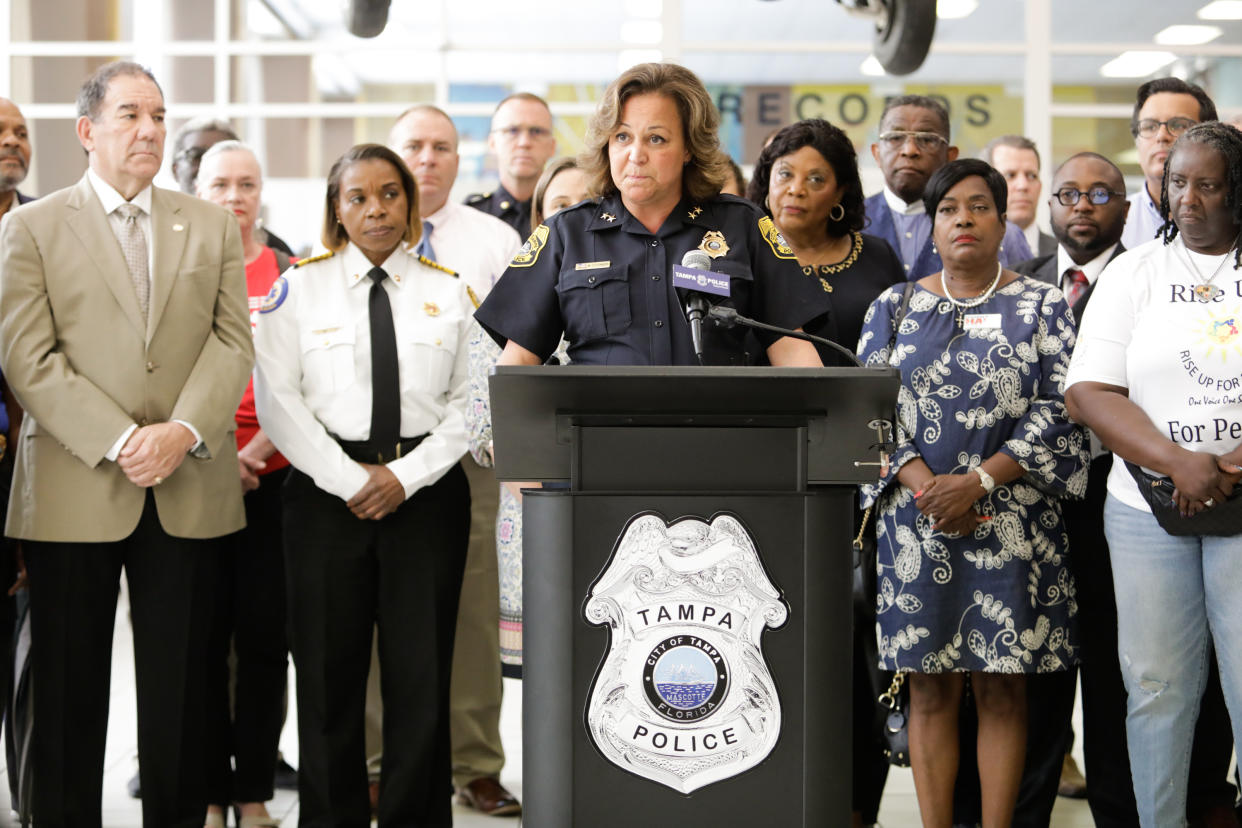Tampa’s upturn in gun violence | Editorial

The cycle of gun violence in Tampa shows no sign of slowing as the beginning of summer heats up. The new police chief, Mary O’Connor, has rightly taken a visible lead in galvanizing community outrage. But the public needs to see a more focused and organized response to this deadly crisis.
The two fatal shootings on June 6, both within miles and hours of each other, captured the troubling spasm of violence. A shooting in broad daylight rattles the concept of law and order. The following day, O’Connor sent a strong message of resolve by appearing at a news conference with politicians, activists, pastors and prosecutors, underscoring that it takes a village to address this escalating problem.
But the spiral has been growing for years. While Tampa’s increase in violent crime mirrors what’s happening more broadly across the country, the number of aggravated assaults in Tampa has skyrocketed, from 1,186 in 2019 to 1,714 in 2021. Tampa’s murder rate has not only grown; it consistently outpaced the state and national averages in recent years. Since 2014, Tampa’s homicide rate has been about 50% higher than the state and national averages. The number of homicides in Tampa in 2020 (41) was the highest figure since tying that number in 2003. And the 48 homicides last year were the most since 1994 (62).
As of June 3, 20 people have been killed in Tampa this year as a result of gun violence. So this deplorable trend line is holding. Authorities and experts blame many factors including the proliferation of guns, pandemic-related stress, gang activity, the drug trade, irresponsible gun ownership and a pullback by law enforcement after the public outcry over the 2020 police killing of George Floyd in Minneapolis.
To be sure, curbing violent crime is no easy task, and law enforcement cannot do it alone or overnight. To that end, it was good to hear Hillsborough State Attorney Andrew Warren announce last week that his office had taken a heightened interest in prosecuting cases involving weapons. Over a seven-day period in June alone, Tampa police made six arrests for felony possession of a firearm. And since the start of 2022, Tampa police have investigated reports of 78 guns stolen from unlocked vehicles. This carelessness only feeds the weapons pipeline.
Tampa needs an all-of-the-above strategy that involves both carrots and sticks. Tampa police need to build stronger community ties, which can boost crime prevention programs and help crack the no-snitch culture. The Tampa City Council should ensure the police department has the resources it needs to target guns, gangs and other top-level threats. Prosecutors should seek tougher penalties in weapons-related cases. And local governments, the school system and nonprofits need to coordinate their resources to provide greater mentoring, housing, job and mental health services.
Controlling crime, not merely reacting to it, is tough work, and it requires a sustained commitment by the government and private sector alike. It also requires the honesty to recognize that historically underserved neighborhoods need special attention. These shootings, after all, aren’t happening in Davis Islands or Beach Park. But that doesn’t mean they’re not everybody’s problem.
Editorials are the institutional voice of the Tampa Bay Times. The members of the Editorial Board are Editor of Editorials Graham Brink, Sherri Day, Sebastian Dortch, John Hill, Jim Verhulst and Chairman Paul Tash. Follow @TBTimes_Opinion on Twitter for more opinion news.

